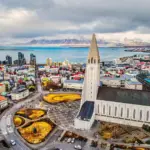Introduction
Petra is a historic city located in southern Jordan. It was founded around the 6th century BC by the Nabataeans, an ancient Arab people. The city is famous for its impressive rock-cut ruins and historical significance. In this article, we'll explore Petra's history and discover the secrets it holds.

Petra was the capital of the Nabataean Kingdom and an important trading center on the ancient caravan route. The city was carved into pink sandstone cliffs, creating a stunning landscape that attracts tourists from all over the world. Its temples, tombs, amphitheaters, and cisterns are impressive testaments to the ingenuity and skill of the ancient Nabataeans.
One of Petra's most iconic structures is the Treasury, also known as Al-Khazneh. This monumental rock-cut facade is a true architectural treasure and a symbol of the city. It is believed that the Treasury was built as a mausoleum for a Nabataean king, but its true function remains a mystery.
Besides the Treasury, Petra has many other points of interest, including the Monastery, the Roman Amphitheater, and the Street of Facades. Each of these sites has a history fascinating and reveals details about the life and culture of the Nabataeans.
Foundation and Development
The Nabataeans chose the site of Petra because of its strategic location on the ancient trade route between the Middle East and the West. **Over the centuries, the city prospered as an important commercial and cultural center.** Its privileged geographical position allowed Petra to become a meeting point for trade routes connecting different regions of the ancient world.
The Nabataeans developed advanced stone carving techniques, creating impressive facades and monuments. **The Nabataeans' skill in rock carving is one of the most impressive aspects of Petra.** They used a method known as "negative carving," in which they carved directly into the rock, creating incredible structures such as the iconic Treasury of Petra.
Petra was also influenced by various cultures, including Greek, Roman, and Byzantine. **These influences can be seen in the various structures and architectural elements found in Petra.** During Roman rule, the city was incorporated into the Roman Empire and received significant improvements to its infrastructure, such as roads and water systems.
Over the centuries, Petra experienced periods of prosperity and decline. **After the decline of the Roman Empire, the city was gradually abandoned and forgotten.** Its ruins were hidden in the mountains until rediscovered by the explorer Swiss Johann Ludwig Burckhardt in 1812. Since then, Petra has become a popular tourist destination and a UNESCO World Heritage Site.
The Wealth of Petra
Petra's wealth was based primarily on the trade of spices, silk, and incense. The city became an important center of trade, with routes extending throughout the Roman Empire.
The Nabataeans, skilled traders and merchants, took advantage of Petra's strategic location on the ancient trade route between the Middle East and the West. This privileged position allowed the city to become a meeting point for caravans carrying valuable goods, such as exotic spices from the Far East, silk fabrics from China, and aromatic incense from Arabia.

Besides trade, Petra's wealth was also driven by the advanced infrastructure developed by the Nabataeans. They built a sophisticated water supply system, harnessing the region's natural springs. This infrastructure allowed the city to thrive even in an arid environment where water was scarce.
The Nabataeans created an intricate system of canals and ducts to capture and direct water from the springs to the inhabited areas of Petra. They also built cisterns to store water, ensuring a constant supply for the population and the animals used for transportation and trade.
This ability to provide fresh water not only helped sustain Petra's population but also attracted travelers and caravans who depended on a regular water supply during their long journeys through the desert. The city became an important stopping point along trade routes, offering rest, water, and a variety of goods and services to travelers.
Decline and Rediscovery
After centuries of prosperity, Petra gradually fell into decline. Trade routes shifted, leading to a decline in commerce and the city's abandonment. The wealth that once flowed through its streets now dwindled, leading to the deterioration of structures and the abandonment of its inhabitants. The city, once an important center of commerce and power, gradually lost its relevance.
However, Petra's decline did not mean its total disappearance. The city continued to be inhabited, albeit on a much smaller scale, and witnessed the rule of various empires over the centuries.
Petra was virtually forgotten by the Western world until its rediscovery in 1812 by Swiss explorer Johann Ludwig Burckhardt. Dressed as a local Bedouin, he infiltrated the city and revealed its wonders to the world. The explorer's discovery sparked renewed interest in the city, and it became an object of fascination for archaeologists, historians, and travelers.
Since then, Petra has been a major tourist destination, attracting thousands of visitors every year. Its rock-cut buildings, such as the iconic Treasury (Al-Khazneh) and the Monastery (Ad-Deir), are impressive testaments to the grandeur and skill of the ancient Nabataeans. In recognition of their importance, historical and beauty architecturally, Petra was declared a World Heritage Site by UNESCO in 1985.
Attractions in Petra
Petra is known for its many impressive attractions. The Treasure, a rock-cut facade, is one of the city's most famous monuments. Standing approximately 40 meters tall, this elaborate structure was carved in the 1st century BC by the Nabataeans, the ancient inhabitants of Petra. The Treasury is believed to have been a mausoleum or temple, but its true purpose remains a fascinating mystery.
Other highlights include the Monastery, a monumental structure located on a hilltop. At 45 meters high, the Monastery is one of the largest buildings in Petra. To reach it, visitors must climb about 800 steps, but the panoramic view and grandeur of the Monastery make it worth the effort.
THE Roman Theater is another point of interest in Petra. With a capacity of approximately 7,000 spectators, the theater was built by the Romans during the 1st century AD and is a testament to the cultural influences that shaped the city over the centuries. Even today, the theater is used for performances and special events.
THE Street of Facades is one of the most photogenic areas of Petra. Walking along this narrow street, visitors can admire the facades of tombs and temples carved into the rocks. Each facade is unique and features intricate details, highlighting the artistic talent of the Nabataeans. It's a fascinating experience to explore this ancient street and imagine what life in Petra was like thousands of years ago.

Conclusion
Petra's history is a testament to the power of architecture and human ingenuity. Exploring the ruins of this ancient city transports us to a distant past, where a skilled civilization created impressive structures amidst a challenging landscape. The city is a historical treasure trove that allows us to better understand the past and appreciate the beauty of ancient art.
Visiting Petra is an unforgettable experience, full of mystery and wonder. From the iconic Treasury facade to the impressive Monastery, every stone and sculpture tells a fascinating story. As you wander the ancient streets and pathways, you can imagine the life that existed in these buildings millennia ago.
Take advantage of explore history The fascinating and hidden treasures of this unique city. Beyond its main attractions, Petra holds surprises around every corner. Discover the rock-cut tombs, the cisterns that supplied the city with water, the bustling shopping streets, and the staircases that lead to breathtaking views. Every detail reveals the grandeur and complexity of this ancient civilization.
Before you leave, be sure to find out the best times to visit each attraction, especially to avoid crowds. Plan your visit in advance, but be prepared to be amazed by Petra's grandeur and splendor. Remember to respect the site, follow the guides' instructions, and contribute to the preservation of this historical gem.
Lucas Wanderlust has a tireless spirit of adventure, always seeking new travel experiences. Fascinated by the world and the possibility of exploring unknown destinations, he fell in love with the sense of freedom and self-discovery that traveling alone provides. With a backpack on his back and a heart open to the unknown, Lucas embarks on exciting journeys, where each destination becomes a unique chapter in his life story. He gives himself body and soul to the magic of solo travel, inspiring others to follow in his footsteps and discover themselves through adventure.







